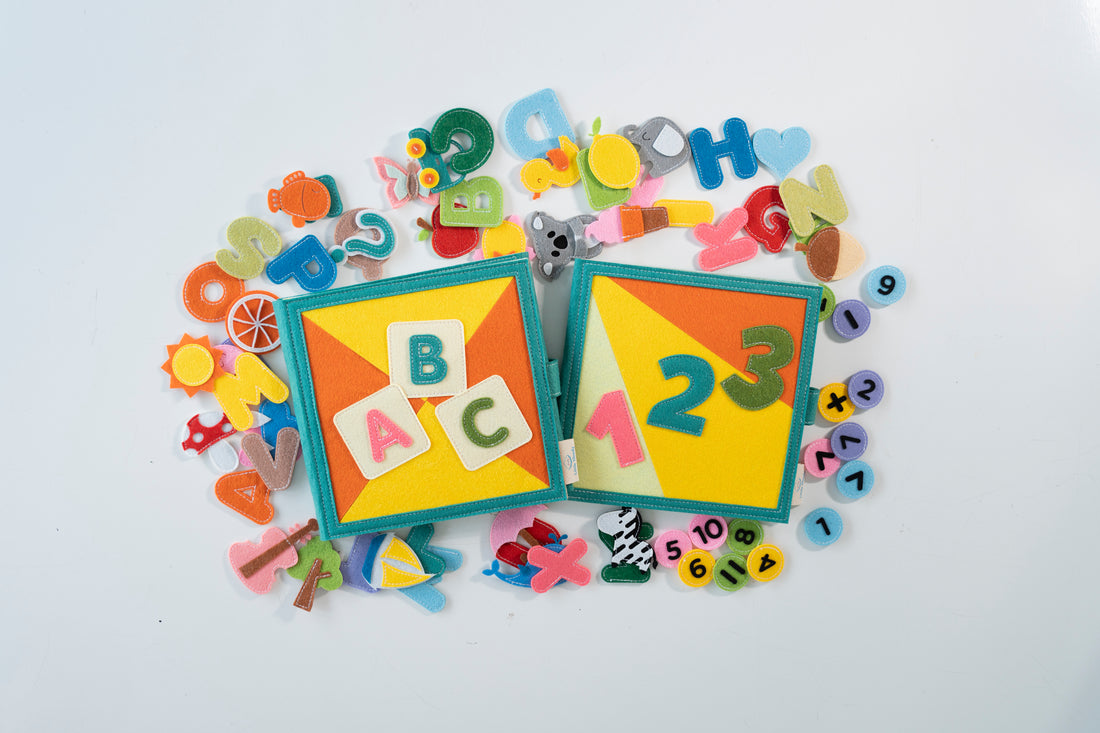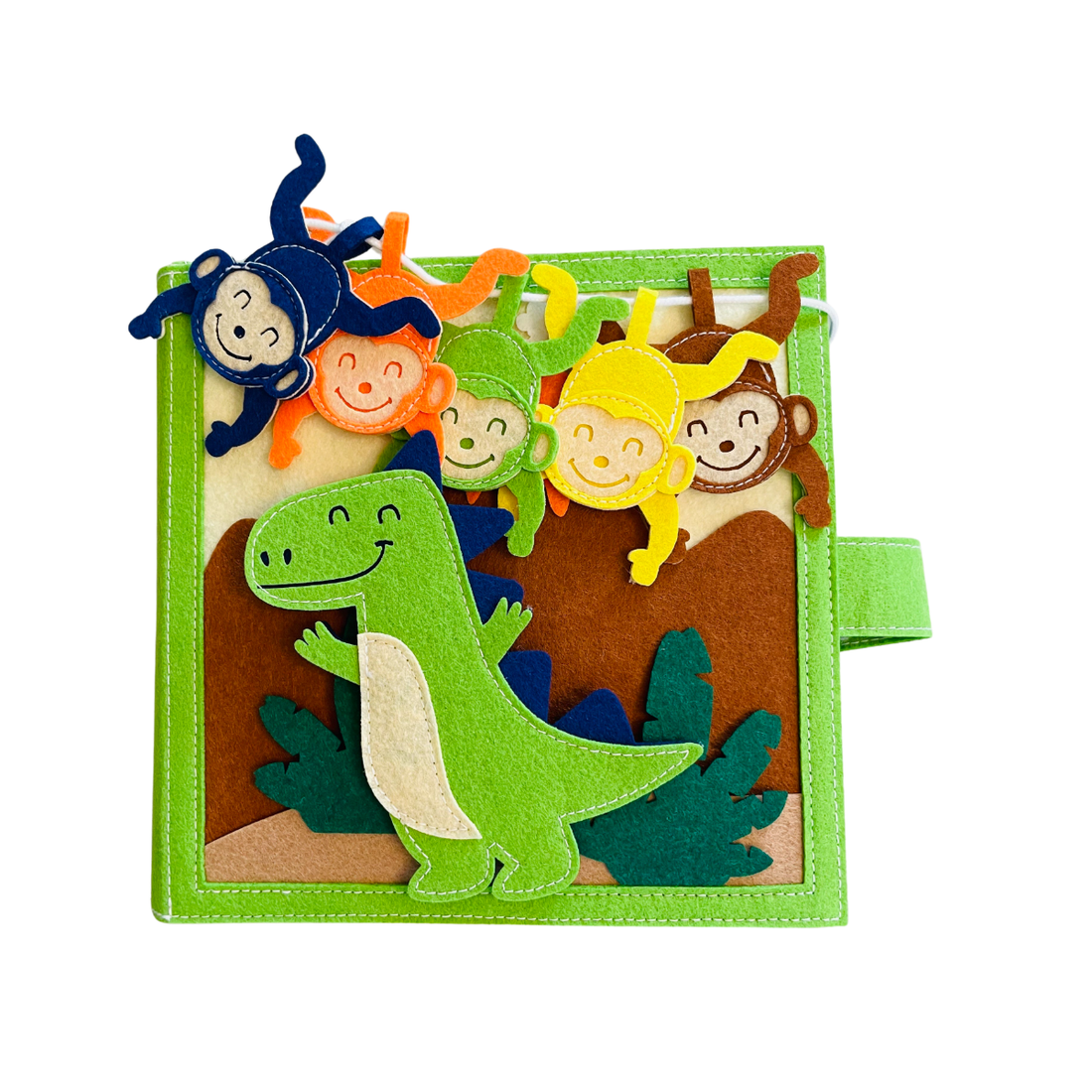The Art of Quiet Books: A Creative Outlet for Your Toddler's Development
A child's brain is a sponge, soaking up knowledge, experiences, and stimuli from the world around them. In this rapid stage of development, it's vital to provide them with engaging learning tools that promote creativity, critical thinking, and motor skills. One of the best ways to do this is through the use of quiet books.What is a Quiet Book?

A quiet book, also known as a soft book, cloth book, or busy book, is a custom-made, multi-page book filled with interactive activities designed for young children. These books usually contain elements such as buttons, zippers, laces, and different textures that provide an enriching sensory experience.
How Quiet Books Enhance Development
Quiet books offer a plethora of benefits for your child's growth. Here's how they stimulate a toddler's development:
1. Enhance Fine Motor Skills
Activities in a quiet book, such as lacing, buttoning, or moving pieces around, help develop fine motor skills. These are crucial for tasks the child will do independently later on, such as writing, eating, or dressing themselves.
2. Encourage Problem-Solving
Quiet books often include puzzles or challenges that require a certain level of problem-solving. This nurtures a toddler's ability to think critically, understand cause and effect, and make connections.
3. Improve Language and Communication
Through images and words in the quiet book, toddlers can enhance their language and communication skills. This can include identifying objects, animals, colors, and more, and even starting to recognize written words.
4. Foster Independent Play
A quiet book encourages independent play, an essential part of a child's development. Independent play promotes creativity, boosts confidence, and fosters an understanding of self-reliance.
5. Provide Sensory Stimulation
The different textures and elements in a quiet book provide a rich sensory experience. This enhances a child's perception and understanding of different stimuli and contributes to cognitive development.
Creating a Quiet Book for Your Toddler

The beauty of a quiet book is that it can be customized to your child's interests, making learning more engaging. From themes around animals and nature to daily activities and routines, the possibilities are endless. You can create a quiet book yourself, or choose from the various options available in the market.
7 Essential Elements to Include in a Busy Book for Toddlers
Creating a busy book for your toddler can be an enjoyable task, allowing you to customize each page to suit your child's interests and developmental needs. A well-designed busy book can foster creativity, encourage cognitive development, and refine motor skills. Here are seven essential elements to include in a busy book for toddlers:
1. Textures:
Toddlers learn by exploring their surroundings, and introducing different textures in your busy book can provide a sensory-rich experience. Include elements like felt, ribbons, faux fur, or sandpaper to stimulate their sense of touch.
2. Colors and Shapes:
Use a variety of vibrant colors and diverse shapes throughout the book. These elements will capture your toddler's attention and assist in teaching them about colors, shapes, and pattern recognition.
3. Alphabet and Numbers:
Dedicate some pages to alphabets and numbers. This could involve tactile letters and numbers that the child can trace with their fingers, or flap-based activities where lifting a flap reveals an object starting with a particular letter.
4. Interactive Elements:
Incorporate elements such as buttons, zippers, laces, and Velcro. These not only keep your toddler engaged but also help them develop fine motor skills and hand-eye coordination.
5. Puzzles:
Simple puzzles stimulate problem-solving skills and cognitive development. This can include shape-matching puzzles, a mini maze, or a sequencing activity.6. Themes:
Themed pages can make the busy book more enjoyable. This can involve scenes from nature, animals, daily routines, seasons, or transportation. Themes can provide context for the activities and make learning more relatable for the toddler.
7. Real-World Activities:
Incorporating pages that mimic real-life tasks can be very beneficial. This could involve activities like tying shoelaces, buttoning a shirt, or setting a table. This will help toddlers understand and master tasks they see adults performing in their daily life.
Remember, the aim of a busy book is not just to keep a toddler engaged, but to make learning a fun and interactive experience. The more thoughtfully you design your book, the more it can contribute to your child's development. It's a labor of love that will certainly pay off as you watch your child explore, learn, and grow.
How Quiet and Busy Books Enhance Your Toddler's Sensory Skills
Sensory skills are integral to a toddler's development. They're the foundation through which children understand and interact with their environment. One of the most effective tools for enhancing these skills are quiet and busy books. Let's delve into how these interactive books boost your toddler's sensory skills.What are Sensory Skills?
Sensory skills refer to a child's ability to process and respond to sensory information like sight, sound, smell, taste, touch, and movement. Sensory play, which stimulates these senses, contributes significantly to a child's cognitive growth, language development, gross and fine motor skills, and problem-solving abilities.
Quiet and Busy Books: A Sensory Goldmine

Quiet and busy books, made of cloth or soft materials, are filled with activities that engage a child's senses. They are designed to be interactive, tactile, visually engaging, and sometimes even auditory. Here's how they contribute to enhancing a toddler's sensory skills:
1. Tactile Stimulation
Quiet and busy books incorporate a range of materials such as fabric, felt, lace, buttons, and zippers, providing a rich tactile experience. This can help improve your child's tactile discrimination - their ability to recognize and respond to different textures and touch sensations.
2. Visual Stimulation
With a variety of colors, patterns, and pictures, these books can stimulate visual perception. This includes color and shape recognition, understanding patterns, and developing visual discrimination skills.
3. Fine Motor Skills
Many activities in quiet and busy books require precise hand and finger movements, enhancing fine motor skills. These can involve buttoning, zipping, lacing, or moving small parts around, all of which contribute to a child's hand-eye coordination.4. Auditory Stimulation
While not as common, some quiet books include elements that produce sounds when interacted with. This could be a squeaky toy, a crinkly page, or bells, all of which provide auditory stimulation and contribute to the development of listening skills.
5. Cognitive Development
The activities in a quiet or busy book can help with problem-solving, understanding cause and effect, and memory skills. For instance, puzzles or sorting activities can stimulate a child's cognitive skills, indirectly enhancing their sensory processing abilities.In conclusion, quiet and busy books, with their multifaceted sensory elements, play a crucial role in a toddler's sensory development. They not only entertain and keep your child engaged but also foster essential sensory skills that are key to their overall development.






























